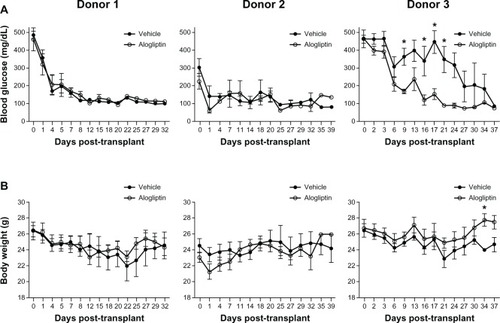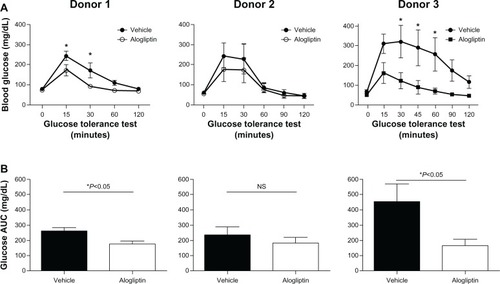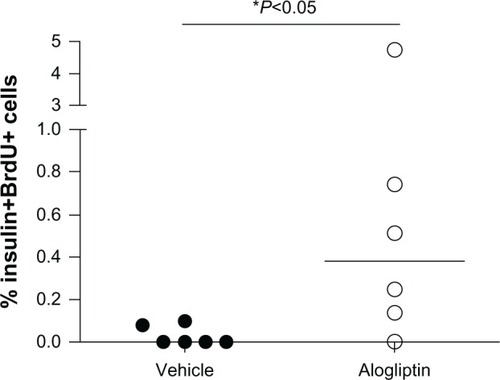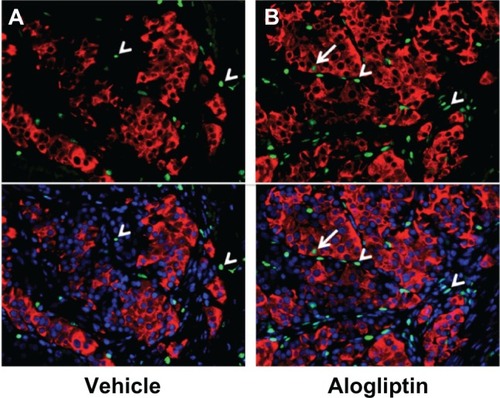Figures & data
Table 1 Demographic characteristics of human islet donors
Figure 1 Comparison of blood glucose and body weights of control and alogliptin-treated mice engrafted with human islets.
Abbreviation: NSG, NOD-scid IL2rγnull.

Figure 2 Comparison of glucose tolerance tests in control and alogliptin-treated mice engrafted with human islets.
Abbreviations: AUC, area under the curve; NS, not significant.

Figure 3 Comparison of human insulin and C-peptide levels in control and alogliptin-treated mice engrafted with human islets.
Abbreviation: NSG, NOD-scid IL2rγnull.

Figure 4 Induction of human beta cell proliferation with alogliptin treatment of islet engrafted mice. Percent human beta cell proliferation in islet grafts from vehicle control (n=6 total, 2 per islet donor) and alogliptin-treated (n=6 total) mice.
Abbreviation: BrdU, bromodeoxyuridine.

Figure 5 Insulin+BrdU+ beta cells in human islet grafts from alogliptin-treated mice.
Abbreviations: BrdU, bromodeoxyuridine; DAPI, 4′,6-diamidino-2-phenylindole.
